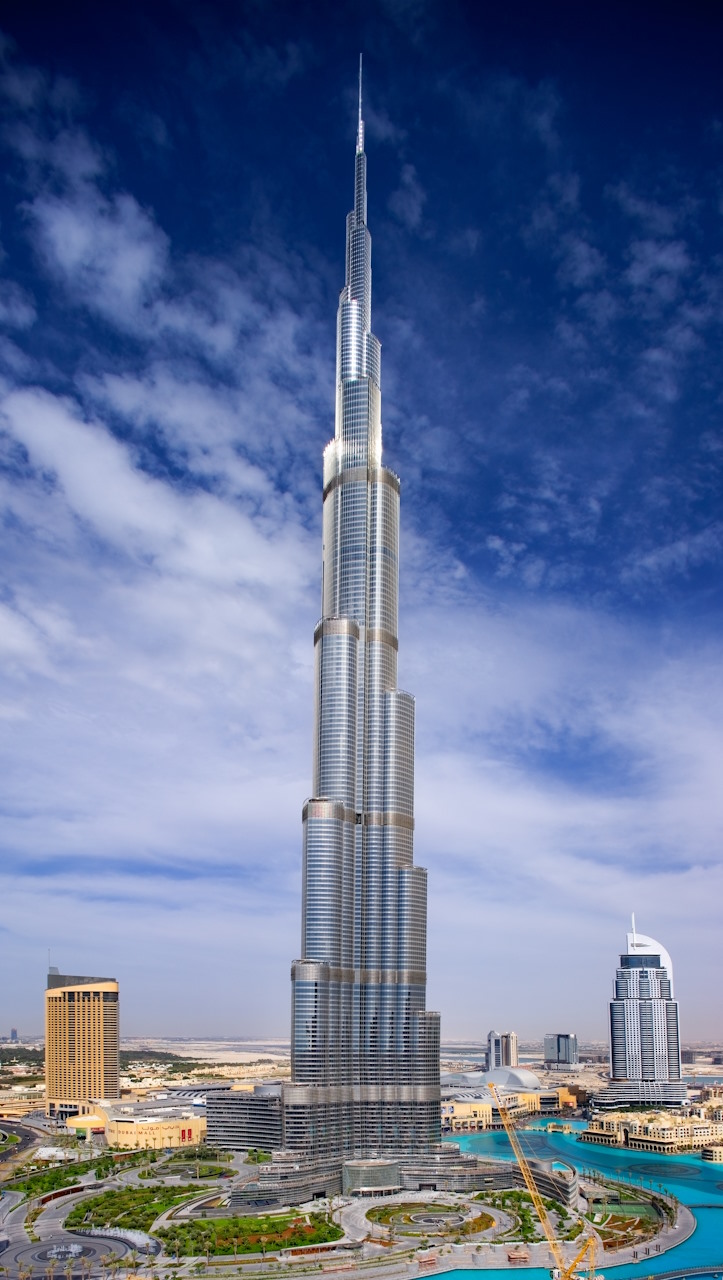
Stainless steel and titanium play a pivotal role in enhancing structural integrity, especially in environments that demand high durability and corrosion resistance. This article explains the advantages of building with these alloys, and some modern technologies that make it possible to incorporate these amazing construction materials.
By Anna Liza Montenegro and Tom Schwarzweller, Microsol Resources
Throughout human history, advancements in construction materials and methods have been a hallmark of progress. We define the success of entire civilizations based on the way they built structures. For example, we praise the ancient Egyptians for their incredible ability to cut stone and form it into colossal pyramids. In Greece, the intricate marble work of the Parthenon is all but synonymous with Greek identity. However, in terms of architectural achievement, there has never been a more progressive era than the present. In 2000 years, surely, future archaeologists will look back in amazement at the engineering achievements like the 2717-foot-tall (829 m) Burj Khalifa Tower or the beautiful Walt Disney Concert Hall and marvel at the materials that make these projects possible, specifically, stainless steel and titanium alloys.
Advantages in modern construction
As we continue to push the boundaries of what is possible in modern construction, we rely more and more on high-tech building materials that combine durability, sustainability, and aesthetic appeal. Stainless steel and titanium alloys are two such materials. Each metal has its own unique strengths and characteristics, making them increasingly popular in modern design and construction.
Stainless steel: durability meets flexibility
Because of its exceptional corrosion resistance, stainless steel is a staple material in modern construction. The intrinsic composition of the alloy includes iron, chromium (typically at least 10.5%), nickel, and molybdenum, which forms a thin, sturdy layer of chromium oxide on the surface of the metal that prevents further corrosion.
This layer essentially “self-heals” in the presence of oxygen. This corrosion-resistant characteristic makes it a popular choice in cities exposed to harsh elements like salty sea spray or chemical exposure in industrial zones.
Additionally, stainless steel offers significant aesthetic flexibility, a crucial aspect of contemporary architecture. Its surface can be finished in various ways to produce a matte, brushed, or mirror-like appearance, allowing architects to “play with the light” as it reflects off a building’s focal points.
Stainless steel’s sustainability is another strong selling point for the alloy. It is 100% recyclable, and approximately 50% of new stainless steel is made from melted-down scrap metal, contributing positively to the lifecycle of the material and supporting eco-friendly building practices.
Titanium: strong and lightweight
Titanium alloy is renowned for its outstanding strength-to-weight ratio, making it ideal in applications where reducing the load is critical to the design. For example, the framing of a high-rise building puts an incredible load on its foundation, so weight reduction plays an important role in the longevity and integrity of the structure. According to Metal Supermarket, titanium can be as much as 40 times more expensive than steel per unit. So, a complete titanium frame would be impractical from a financial standpoint. However, swapping out steel fasteners and cables for titanium ones can result in thousands of pounds of weight loss, reducing engineering costs in other load-bearing building systems.
In terms of resistance to environmental challenges, titanium excels. Like stainless steel, it is impervious to both saltwater corrosion and atmospheric conditions, and it can withstand high temperatures, maintaining its integrity in fire conditions better than most conventional materials. This makes titanium an invaluable resource in scenarios involving high thermal stress or requiring high fire safety.
Innovative technologies transforming planning & design
Technological innovations are significantly advancing the integration of stainless steel and titanium in construction. Here are three key technologies that are reshaping the planning and design process:
Building Information Modeling (BIM) – Digital modeling tools and advanced simulation software have become standard in the industry. These resources allow for unprecedented precision in design and stress analysis, enhancing the planning and execution of construction projects.
3D printing – This technology is pushing the boundaries of traditional construction by enabling the manufacturing of complex titanium parts for customized applications.
3D printing helps reduce waste and accelerate construction timelines, making it a game-changer for producing bespoke elements quickly and efficiently.
Laser cutting and CNC machining – These techniques provide additional precision in shaping stainless steel, ensuring components fit together with exact tolerance. Laser cutting and CNC machining not only improve the structural integrity of buildings but also enhance their aesthetic appeal, enabling the creation of designs that were previously too intricate or costly to execute.
Integrating BIM for efficient planning and execution
Building Information Modeling (BIM) has transformed how architects and engineers plan, design, construct, and manage buildings and infrastructure. Despite the popular notion that BIM is only appropriate for larger firms and projects, design firms of all sizes can leverage BIM to create precise digital representations of buildings’ physical and functional characteristics.
When stainless steel and titanium are incorporated into these models, the resulting simulations can predict how these materials will perform under various conditions, significantly improving the decision-making process.
BIM also facilitates a collaborative environment where all project stakeholders can access and interact with the same model, reducing errors and aligning objectives. This feature is particularly useful when working with materials like stainless steel and titanium, which often require precise handling and installation.
Future Trends
Looking to the future, many new technologies and construction materials are under development with the potential to revolutionize the way we design and build structures. Here are three that we believe will become increasingly popular in the coming years.
Graphene – At one atom thick, Graphene is the thinnest material known to man. However, it is incredibly strong. Graphene-info.com says it is “about 200 times stronger than steel” and “an excellent conductor of heat and electricity and has interesting light absorption abilities.” With further development, Graphene has the potential to completely change the way we view building materials.
Artificial Intelligence (AI) – From automated design and predictive maintenance to real-time clash detection, AI is becoming increasingly integral to the AEC industry. AI technologies can analyze vast amounts of data from connected construction sites to optimize workflows, predict project delays, and ensure resource efficiency, leading to smarter, safer, and more predictable building routines.
Self-Healing concrete – This innovative material addresses one of the most common issues in construction: concrete degradation. Infused with bacteria that produce limestone, self-healing concrete can automatically fill cracks that form, significantly extending the material’s lifespan and reducing maintenance costs.

About the author
Tom Schwarzweller is an Account Executive for Microsol Resources for upper New York State and Michigan. Tom has a long background in selling and supporting CAD and BIM software to the architectural, engineering, and construction industry. He has worked with many of the early adopters of building information modeling (BIM) and has learned the benefits that BIM can create and an understanding of what makes a BIM implementation successful. His many interests include sailing, photography, and biking.
About this Tech Article
Appearing in the October 2024 issue of Stainless Steel World Magazine, this technical article is just one of many insightful articles we publish. Subscribe today to receive 10 issues a year, available monthly in print and digital formats. – SUBSCRIPTIONS TO OUR DIGITAL VERSION ARE NOW FREE.
Every week we share a new technical articles with our Stainless Steel community. Join us and let’s share your technical articles on Stainless Steel World online and in print.


